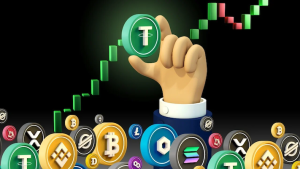Join Our Telegram channel to stay up to date on breaking news coverage
The SEC shocked the cryptocurrency community last week when it revealed that it was bringing charges against Paxos for issuing an unregistered security in its BUSD stablecoin—a claim that the business “categorically disagrees with.” The Securities and Exchange Commission has not said how BUSD, which according to Paxos is completely backed and fully redeemable, could be considered a security. Also, it hasn’t provided any advice to other stablecoin suppliers.
One of the most revolutionary financial technologies to emerge in the previous ten years is stablecoins, or cryptocurrencies linked to the value of the US dollar. But, the SEC is actively pursuing them. The largest online payment processor in the world, PayPal, recently decided to halt the creation of its own stablecoin amid speculations that the federal government may now regulate stablecoins as securities.
The SEC is flirting with a dangerous precedent by adopting a blunt-instrument approach to stablecoin regulation, which could impede not only genuine innovation but also the adoption of the global dollar.That’s because stablecoins have the ability to solidify US financial power for a decade, if they are properly regulated.
How accelerating the dollarization process
Eswar Prasad, an economist of the International Monetary Fund, boldly stated last summer that stablecoins “may substitute national currencies issued by their central banks.” This is now taking place in real time. Inflation-ravaged nations like Zimbabwe, Turkey, and Argentina force people to choose between watching their salaries disappear and finding safety by converting their local money into stablecoins backed by the dollar. It’s hardly shocking that many choose the latter.
Consider Latin America as a case study: the region consistently experiences currency depreciation, with one of the highest inflation rates in the world (14.6%) last year. It should come as no surprise that this area also has the greatest stablecoin adoption rate. A Mastercard investigation found that almost a third of Latin Americans have used private stablecoins to make a purchase. Nevertheless, 34% of all small-retail transactions in Venezuela alone are made using stablecoins.
In an unexpected turn of events, stablecoins are serving as the inflation hedge that Bitcoin was intended to provide. By the end of the decade, if stablecoin adoption keeps up its current pace, it may be a trillion-dollar industry. Uncle Sam might dethrone Satoshi as the ruler of digital currency in the ultimate crypto coup.
Millions of new players in the dollar economy have been attracted by stablecoins. Nevertheless, SEC rules might once more bar them. Stablecoin adoption would face a significant barrier if the government classified them as securities, and this would come at a crucial time for the dominance of the US dollar.
Remember that the SEC’s crackdown on stablecoins comes at a time when less global energy trade is conducted in dollars and the digital yuan is gaining traction. Xi Jinping has increased pressure on oil-rich leaders to pay oil contracts in yuan instead of dollars during the past year, and many of them are buckling under the pressure. The yuan is undoubtedly vying for the crown even though it will be years before the petrodollar is overthrown. Because China launched its own digital currency, the e-CNY, in 2021, it already has a competitive advantage over the United States in this area. As a result, U.S. authorities should be aware of China’s global ambitions.
With the introduction of its own Central Bank Digital Currency, can the United States regain lost ground? It shouldn’t even if it could. An American CBDC would represent a significant infringement of privacy and would give central bankers enormous power.
What therefore do we have to contend with in our conflict with the digital yuan? Stablecoins. So, there is even greater need for the SEC to regulate stablecoins properly.
Stablecoins must be seen by the agency for what they truly are: instruments for projecting US economic might rather than a problem that has to be fixed. The prospect for U.S. dollar expansion since Bretton Woods has never been greater than it is right now thanks to stablecoins’ organic growth on a global scale.
If technology is the new oil, then the de facto currency of the internet should be well-managed stablecoins, which might eventually replace dollars in energy exchanges. Stablecoins may serve as billions of people throughout the world’s gateway to the dollar economy, ushering in a new era of American financial hegemony. We would be foolish to pass up this chance. And we might be fools. Despite escalating hostilities between the United States and China, the SEC is still unable to see the wider picture. The very innovation that may ensure U.S. dollar dominance for the ensuing ten years could be killed if the agency regulates stablecoins as securities.
A more comprehensive approach to stablecoin regulation is required given the current geopolitical context, one that looks for remedies to the following issues: How may stablecoins be used as tools of statecraft? How can we control them so that consumers are protected while yet promoting dollarization? And how can we encourage the use of stablecoins outside to balance the digital yuan?
Stablecoins are an opportunity, not a problem. And with the appropriate regulations, we can take advantage of this chance to strengthen American hard power, empower consumers, and establish our presence in the burgeoning digital economy.
Related
- New York Department of Financial Services orders Paxos to stop BUSD stablecoin creation
- USP Stablecoin Losses Dollar Peg Following $8.5 Million Attack On DeFi Protocol Platypus
- Canada’s upgraded crypto rulebook does not leave much room for stablecoins
Join Our Telegram channel to stay up to date on breaking news coverage


